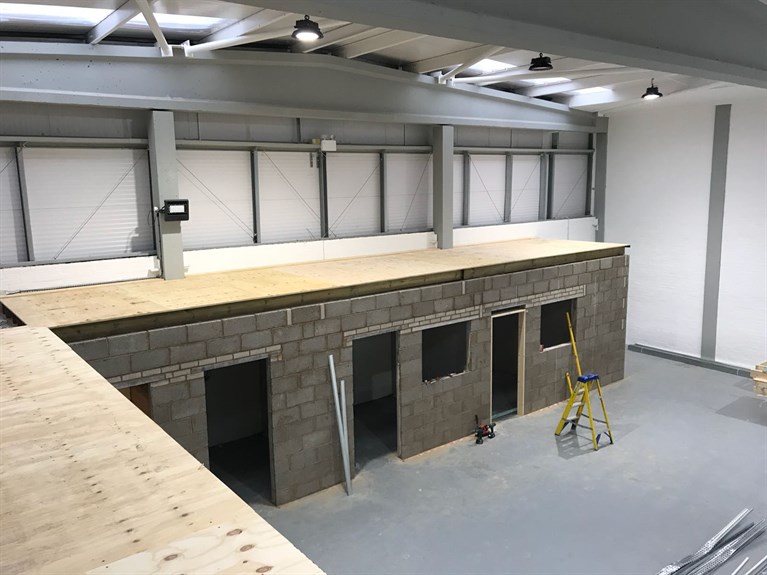Commercial fit-outs serve a crucial role in defining a company image and improving the shopping experience. As organizations strive to stand out in a fierce marketplace, a well-executed fit-out can greatly influence revenue and consumer contentment. Whether you are starting a fresh outlet, remodeling an ongoing space, or revamping a temporary setup, comprehending the fundamentals of retail fit-outs is crucial for your achievement.
This guide will take you through the entire journey of a retail fit-out project, from idea to completion. We will consider critical factors such as design and planning, cost management, and overseeing the project, while also looking at up-to-date trends and creative strategies that can enable secure the future of your enterprise. With the right knowledge and plans, you can create an appealing retail environment that not solely invites customers but also ensures repeat visits for more.
Understanding Retail Fit-Outs
A retail fit-out is the method of making a commercial space ready for business. This includes everything from planning and arrangement to furniture installation and finishing details. It is a vital aspect of establishing a retail, as it directly affects how customers perceive the space and engage with products. A carefully planned fit-out reflects the brand identity and enhances the overall shopping atmosphere, making it essential for attracting and retaining customers.
The significance of retail fit-outs is critical. They play a significant role in guiding customer decisions and can ultimately impact revenue performance. A strategically designed retail space can enhance customer engagement, optimize operations, and create a inviting environment that encourages spending. Additionally, fit-outs provide the avenue to implement new strategies and technologies that can additionally enhance the shopping experience, setting the stage for business growth.
As the retail landscape continues to evolve, businesses must adjust their fit-out strategies to meet changing consumer preferences and market trends. Investing in a modern and innovative retail fit-out can help merchants keep up with competitors and cater to the needs of their target audience. By focusing on elements such as layout, branding, and sustainability, retailers can create spaces that resonate with customers and encourage loyalty, making fit-outs an essential component of retail success.
Successful Retail Fitting Out Approaches
A successful retail fit-out begins with thorough design and strategy. Understanding the intended audience and their tastes is key to create an appealing space that resonates with customers. Start by conducting market research to spot trends and customer requirements, which will guide your design decisions. Adding features that enhance customer engagement, such as dynamic displays or welcoming seating areas, can greatly elevate the shopping experience. Additionally, ensuring that the layout is organized logically will help customers move through the space easily, ultimately motivating them to invest more hours in-store.
Another critical strategy is effective branding integration within the retail fit-out. Your store's design should represent your brand identity and ethos, from color schemes to material choices. This doesn’t just creates a unified look but also boosts brand recognition. Consider utilizing visual merchandising techniques, such as strategic product placement and signage, to communicate your brand story and emphasize promotions. Working with professionals who know how to incorporate branding into the real space will ensure that your store stands out and leaves a memorable impression on visitors.
In conclusion, managing the fit-out process efficiently can determine the success of a project. Establishing defined objectives and timelines helps keep the project on schedule, reducing the risk of delays and budget overruns. Consistent communication with contractors and team members fosters collaboration and addresses potential issues ahead of time. Being prepared for unexpected challenges by having contingency plans in place can minimize disruptions. By prioritizing organization and teamwork throughout the fit-out process, you can develop a thriving retail environment that meets both your and your customers' requirements.
Cost Management and Financial Considerations
When embarking on a retail fit-out project, understanding the financial implications is vital. Before diving into Retail Fit Out Devon and construction, you should create a clear budget that includes all aspects of the fit-out. This consists of costs for materials, labor, permits, and any unexpected expenses that may arise. It's essential to create a detailed financial plan that focuses on your must-haves while also allowing some flexibility for potential adjustments throughout the process.
Cost management is a significant factor in ensuring the success of your retail fit-out. Be aware of the unexpected expenses that can creep into your budget, such as additional permits, contractor fees, or last-minute design changes. To mitigate these risks, it's advisable to have a contingency fund that can account for around ten to fifteen percent of your total budget. This safety net can help you navigate any financial surprises without derailing your overall project.
Financing options play an essential role for businesses looking to manage their retail fit-out costs more effectively. Various financing solutions are available, whether you’re a modest business seeking loans or a large-scale enterprise considering equity financing. Looking into these options can reduce the upfront financial burden and allow you to focus on creating an engaging retail environment that enhances customer experience and drives sales. Aligning your aspirations with practical financial planning will prepare the ground for a successful retail fit-out.

